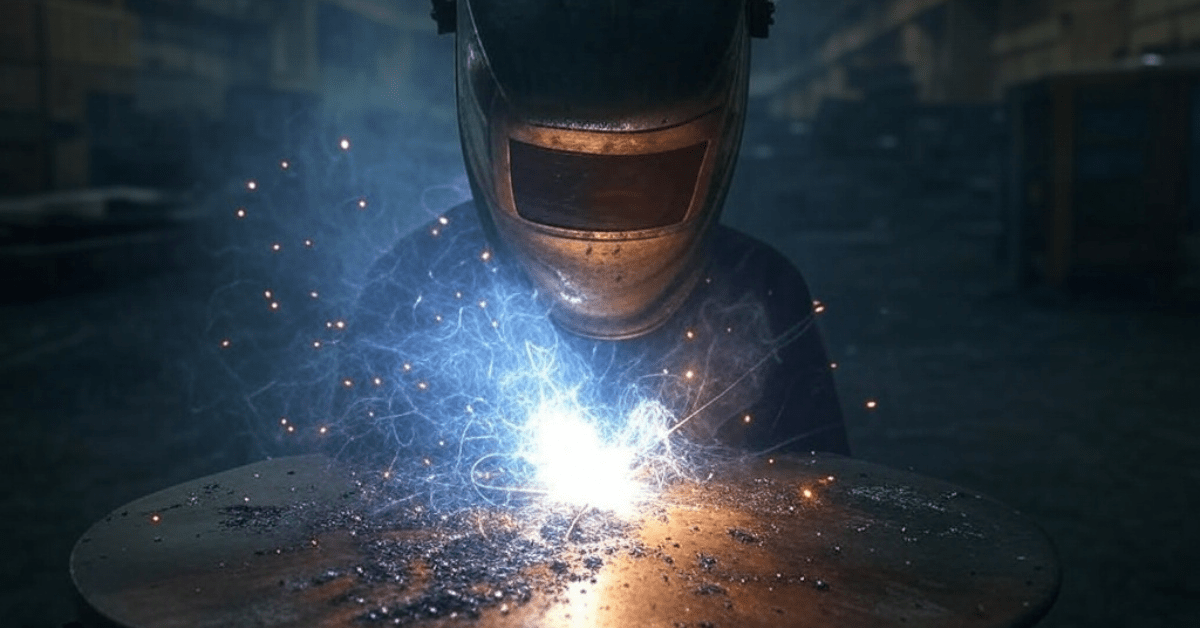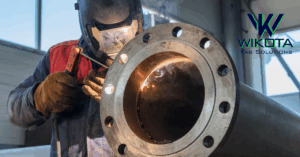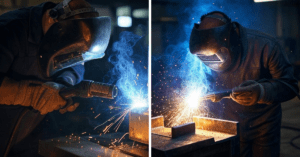In the world of industrial fabrication, achieving strong, consistent, and high-quality welds is essential for building durable structures and equipment. One welding method that has become a staple in heavy-duty applications is submerged arc welding (SAW). Known for its efficiency and ability to produce deep, high-quality welds, SAW is widely used in industries like shipbuilding, oil and gas, construction, and manufacturing. This blog post will explore the fundamentals of submerged arc welding, its benefits, and why it’s a preferred technique for large-scale fabrication projects.
What is Submerged Arc Welding (SAW)?
Submerged arc welding (SAW) is a welding process that uses an electric arc to fuse materials together, typically metals, under a protective blanket of granular flux. This granular flux completely covers the welding arc and molten metal, shielding it from contaminants and reducing spatter and smoke. The process is fully automated or semi-automated, making it ideal for continuous welding on long seams and thick materials.
Key Components of Submerged Arc Welding:
– Electrode: A consumable wire electrode that melts to form the weld, providing filler material for the joint.
– Flux: Granular material that covers the weld area, protecting it from atmospheric contamination and stabilizing the arc.
– Power Supply: Provides the current needed to create the electric arc, typically DC or AC.
– Welding Head: Feeds the electrode and flux into the weld zone, maintaining a consistent welding speed and quality.
The submerged arc welding process is particularly well-suited for thick, flat, or horizontal welds. Unlike other methods, SAW doesn’t require a shielding gas, as the flux layer provides full protection. This allows for high deposition rates and deeper weld penetration, which are essential for projects requiring large, strong welds.
How Submerged Arc Welding Works
The SAW process is simple yet highly effective. Here’s a step-by-step look at how it works:
- Preparation: The workpieces are positioned, and the area to be welded is cleaned to remove any contaminants. The SAW equipment, including the welding head, electrode, and flux feeder, is set up according to project specifications.
- Electrode and Flux Application: The consumable wire electrode is positioned over the joint, and a layer of granular flux is applied over the area where the weld will be made.
- Arc Formation and Melting: When power is applied, an electric arc forms between the electrode and the workpiece, creating intense heat that melts the electrode and base material. This heat is confined under the flux layer, which melts partially to form a protective slag over the weld pool.
- Shielding and Stabilization: The molten flux creates a barrier that shields the weld from oxidation and other atmospheric contaminants. It also helps stabilize the arc, reducing spatter and providing a smooth, consistent weld.
- Cooling and Slag Removal: After the weld is completed, the slag layer solidifies and cools. This slag is removed to reveal a clean, high-quality weld bead.
Benefits of Submerged Arc Welding
Submerged arc welding offers several unique advantages that make it a preferred technique for fabrication projects, especially in heavy industries. Here are some of the key benefits:
- High Deposition Rates and Speed
SAW is known for its high deposition rates, meaning it can deposit a large amount of weld material quickly. This allows for faster welding speeds, reducing project timelines and labor costs.
– Efficiency: The automated or semi-automated nature of SAW allows for continuous welding, which is much faster than manual welding methods.
– High Productivity: Faster welding speeds and high deposition rates make SAW ideal for projects with large volumes of welding, such as pressure vessels, pipelines, and structural components.
- Strong, High-Quality Welds
SAW produces deep weld penetration, resulting in strong, reliable welds that can withstand significant stress and pressure. This is particularly important in industries where structural integrity is essential, such as shipbuilding and oil and gas.
– Durability: The welds created by SAW are highly durable and have a low risk of cracking or defects.
– High Integrity: Deep penetration ensures that the welds are structurally sound, making SAW suitable for heavy-duty applications.
- Minimal Spatter and Clean Weld Beads
One of the standout benefits of SAW is its ability to produce clean, high-quality welds with minimal spatter. The flux layer not only protects the weld pool but also creates a smooth, consistent finish.
– Reduced Cleanup: SAW produces minimal spatter, which means less post-weld cleanup is needed.
– Smooth Finish: The protective slag layer results in a smooth, high-quality weld bead, reducing the need for grinding or polishing.
- Improved Safety and Reduced Fumes
The flux used in SAW covers the welding arc, which reduces the amount of visible light, fumes, and spatter produced during the process. This makes SAW a safer option for welders and other personnel working nearby.
– Reduced Exposure to Fumes: The flux layer significantly reduces harmful emissions, creating a safer work environment.
– Lower Heat Radiation: Since the arc is submerged, there’s less intense light and heat exposure, enhancing safety for welders.
- Cost-Effective for Large Projects
While SAW requires specialized equipment, it is highly cost-effective for large-scale projects due to its high speed, efficiency, and reduced labor costs. The ability to produce strong welds quickly means that fewer resources are needed to complete large volumes of welding.
– Lower Labor Costs: Automation reduces labor requirements and allows for faster project completion.
– Material Efficiency: High deposition rates and reduced spatter mean less material is wasted, adding to cost savings.
Applications of Submerged Arc Welding in Fabrication
SAW is a versatile technique that’s ideal for heavy-duty industrial applications requiring large, continuous welds. Here are some common applications where SAW is frequently used:
- Pipe and Pipeline Welding
In the oil and gas industry, pipelines need to be strong, reliable, and capable of withstanding high pressures and harsh environments. SAW is widely used for pipeline welding due to its high penetration and ability to produce long, continuous welds.
Examples:
– Welding large-diameter pipes for oil and gas transportation.
– Constructing high-pressure pipelines for water and wastewater systems.
- Pressure Vessels and Storage Tanks
SAW is often used in the fabrication of pressure vessels and storage tanks, where strong, defect-free welds are essential for handling high pressures and hazardous materials.
Examples:
– Fabricating storage tanks for chemicals, oil, and other industrial fluids.
– Welding pressure vessels used in industrial processing and power generation.
- Structural Steel Fabrication
Structural components in buildings, bridges, and other infrastructure require durable, high-quality welds to ensure stability and safety. SAW is commonly used for welding beams, columns, and other structural elements in steel fabrication.
Examples:
– Welding structural steel for high-rise buildings and commercial complexes.
– Fabricating beams and girders for bridges and infrastructure projects.
- Shipbuilding and Marine Applications
The shipbuilding industry relies on SAW for its ability to create strong, corrosion-resistant welds. SAW is ideal for welding hulls, bulkheads, and decks, providing the strength needed to withstand the harsh marine environment.
Examples:
– Welding steel plates for ship hulls and offshore platforms.
– Constructing decks and other structural components for large vessels.
- Heavy Equipment and Machinery
In the manufacturing of heavy equipment and industrial machinery, SAW is used to create durable welds that can handle heavy loads and repetitive use.
Examples:
– Welding frames and components for construction equipment.
– Fabricating machinery used in mining, agriculture, and manufacturing.
Why SAW is a Key Technique in Fabrication
Submerged arc welding’s combination of speed, strength, and quality make it an indispensable technique for fabrication projects, especially those requiring heavy-duty, high-strength welds. The ability to produce clean, deep welds in a short amount of time is invaluable in industries where downtime is costly and safety is paramount. Additionally, the automation potential of SAW helps improve productivity, reduce labor costs, and minimize risks associated with on-site welding.
For any industry where reliability, durability, and cost-effectiveness are critical, SAW offers a solution that meets and often exceeds the demands of modern fabrication.
Final Thoughts
Submerged arc welding is a key technique in fabrication, offering unparalleled benefits in speed, quality, and durability. Whether used for pipelines, pressure vessels, structural components, or marine applications, SAW enables the creation of strong, high-integrity welds that withstand the most demanding industrial conditions. With its reduced spatter, minimal fumes, and ability to handle large-scale projects, SAW remains a preferred welding method for industries where precision, efficiency, and safety are essential.
For fabrication projects that demand long, continuous welds with high strength, choosing a fabrication provider skilled in submerged arc welding can ensure that each weld meets the highest standards, delivering reliable performance and long-term value.
Ready to power your next project? Explore our
Fabrication Services, and let’s build something strong together.
Contact us today to learn how Wikota’s Fab Shop can help with your fabrication needs.
Serving North America – We ship completed projects anywhere in the US.




